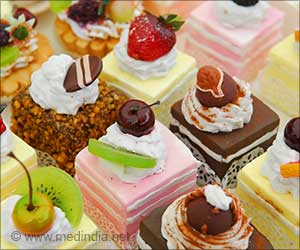Out of the blue you are struck with sudden craving for food? Probably it is no accident if you just saw an image of a cupcake or consumed a sugary soda.

"Studies have shown that advertisements featuring food make us think of eating, but our research looked at how the brain responds to food cues and how that increases hunger and desire for certain foods," said Kathleen Page, principal investigator and assistant professor of clinical medicine at the Keck School of Medicine of USC. "This stimulation of the brain's reward areas may contribute to overeating and obesity, and has important public health implications."
Page's presentation, "Fructose Compared to Glucose Ingestion Preferentially Activates Brain Reward Regions in Response to High-Calorie Food Cues in Young, Obese Hispanic Females," will be made at 11:45 a.m. Tuesday, June 26, during the Endocrine Society meeting, which takes place from July 23 to 26 in Houston, Texas.
Page and colleagues used functional magnetic resonance imaging (fMRI) to measure the brain responses of 13 obese, Hispanic adolescent women ranging in age from 15 to 25. Women were chosen because prior research indicates they are more responsive to food cues; the study group was narrowed to Hispanic women because of the high risk of obesity and type 2 diabetes in the Hispanic community.
The women's brain responses were scanned twice as they looked at pictures of high-calorie foods, such as hamburgers, cookies, and cakes, and low-calorie foods such as fruits and vegetables. After seeing the high-calorie and low-calorie groupings, the participants rated their hunger and desire for sweet or savory foods on a scale from one to 10.
Halfway through the scans, the women drank 50 grams of glucose — equivalent to a can of soda — and another time, they drank 50 grams of fructose. Glucose and fructose are the main components of table sugar and high-fructose corn syrup.
Advertisement
The researchers also noted that fructose stimulated more hunger and desire in the participants' brains than glucose did.
Advertisement
With many questions unanswered about whether these cravings are environmental (caused by obesity) or genetic, Page plans to study what happens to the brains of obese individuals while they are dieting.
Source-Eurekalert















